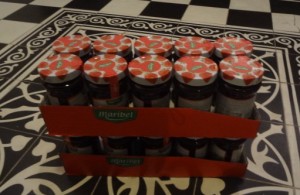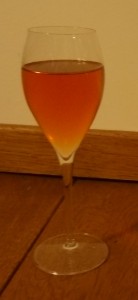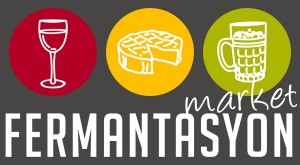It may seem strange but it is very good possible to make wine from jam. I make this wine every year. It is a lovely rose for a nice sunny day. Drink it cold.
The wine should be aged about one year. If you drink it too early it will taste like alcoholic strawberry juice. After one year it is a well-balanced wine. You can still taste strawberry but it is not as strong.
I have made it with oak chips and tannin before. I thought it would make it into a more sophisticated wine with some different flavors and mouth feel but this was not an improvement. Since that experiment I do not use these additions anymore in white wines. I prefer white wines and rose to be fresh and young.
How to make it.
For 25 liter wine I use 20 jars of jam. Sterilize your fermenter with citric acid and sulphite.
Put the jam in the fermenter. Rinse the jars and add some water.
Stir plenty pectoenzymes through the jam. Pectoenzymes break down pectine so the jam becomes more fluid. (I use much more than the instruction mention)
Close the lid and continue the next day.
Dissolve 67 gram citric acid, and a teaspoon of yeast nutrition in some water and add it to the jam.
The jam contains 5670 gram of sugar which is enough to create approximately 12,5 % alcohol in the wine. No additional sugar is needed.
Add the dried yeast to some lukewarm water and let it stand for 15 minutes. Let the yeast absorb the water.
Add water to approximately 24 liters. Stir the ingredients well.
Add the yeast.
You can close the lid with the airlock or just cover the fermenter with a cloth.
After a few hours you will see the first signs of fermentation and after some time it will create lots of CO2 which push the fruit particles up. Shake the fermenter daily to mix the fruit in the most. At this stage you do not want the must in a demijohn because the CO2 will push the fruit in the neck and it will create a big mess.
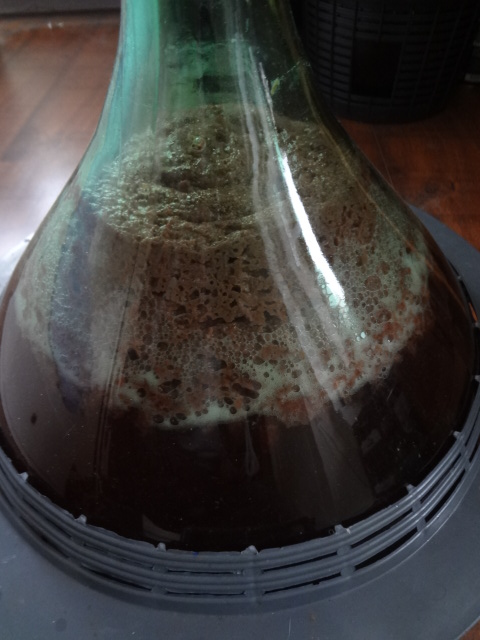
After some time the fermentation slows down and you can move the must to a demijohn. At this stage the new oxygen gives the yeast more energy. Which is a good thing.
The fermentation slows down even more. You can see that the fruit is almost destroyed and has lost much of its color. Time to take it out of the must.
I use a bag made of cloth to filter the bigger particles out of the must.
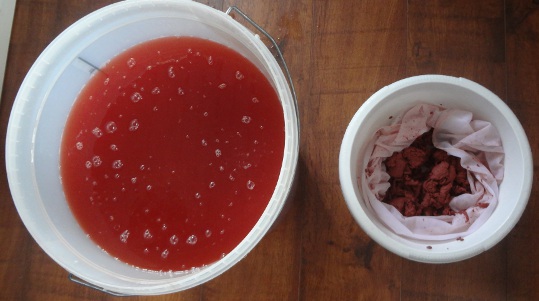 Place the must back in the demijohn and fill the bottle to the neck. The must is now completely full of yeast and is therefore a lot better protected against wild yeasts and bacteria.
Place the must back in the demijohn and fill the bottle to the neck. The must is now completely full of yeast and is therefore a lot better protected against wild yeasts and bacteria.
Leave the bottle until it clears up. This usually goes very quick with strawberry jam. (Quick in winemaking terms.)
When the fermentation is completely stopped you can rack the wine of the lees into another demijohn. Add a little sulphite to protect the wine from oxidation and bacteria. At this stage oxygen is no longer our friend. There is no reason to be paranoid but keep the demijohn filled up to the neck to avoid oxidation.
I do not rack many times. When there is only a little layer sediment in the demijohn I leave it. There is not much influence in the end product and every time you rack you lose a little wine and get it in contact with oxygen.
Just before bottling I rack one last time; Dissolve a little sulphite in some water and add it to a sterile demijohn. Rack the wine in this demijohn and then bottle it.
Age it for one year; but of course you can test sometimes to see how it develops.
Cheers!

